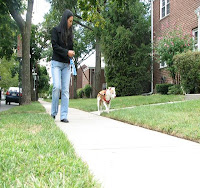When I opened the inbox of my email account this morning, I found a notice sent from the shelter discussing the euthanasia of a few particular dogs. These dogs will be euthanized in a few days for ‘their own sakes.’ They have deteriorated so badly and their mental state has passed the limit where they can remain balanced. Unfortunately, it is no longer humane to keep them in the kennels. Even though our first goal and the strongest effort is to adopt them out as quickly as possible, we also want to provide good food, exercise, and interaction while the dogs are at the shelter. But, the fact is, some dogs just can’t take the life of the shelter too well. I don’t blame them. It’s quite rough. It’s only meant for transition.
And yet, our shelter’s euthanasia rates, as a municipal shelter, seem to be lower than many other shelters in the country. The shelter inConnecticut California
And yet, our shelter’s euthanasia rates, as a municipal shelter, seem to be lower than many other shelters in the country. The shelter in
Euthanasia. Put to sleep. Put down. Yes. I am fully aware that this is a difficult subject for many people, if not all. People may have different positions on this issue depending on their philosophy of animal wellbeing, and I don’t think any one person can say which position is right. As a person who has been working at animal shelters for many years and has seen hundreds of dogs being put to sleep, I would like to present my own point of view on this issue. Also, it is my hope that readers can have a chance to think about this issue along with me.
Taz
Right after I started volunteering at the shelter, and an assignment came up. The shelter was looking for a volunteer who could work with a shelter dog at their obedience training classes as the dog’s training partner. I didn’t hesitate even for a moment to apply for the position, and I was the lucky one who had that opportunity! Taz, a large-breed dog (probably a Labrador and mastiff mix) came in to the shelter as a stray and was looking for a new home like all the other doggies were. Since he was a young large and energetic dog (80+ lbs), he could really use some obedience training to be put on his ‘resume.’ Taz and I participated in the class every Monday night and we also spent as much time as possible outside to practice what we learned in the class. We bonded very quickly and enjoyed every minute we spent practicing or just hanging out. There was also a cute incident that happened with Taz. We were practicing a command called ‘recall’ in the class. The trainer had a whole hotdog in her hand and called Taz - who was off-leash at that time - to come to get the hotdog. But, instead of going toward the trainer to get the hotdog, Taz came running towards me at full speed. He chose me over a hotdog! The whole class started laughing so hard at his sweetness!
As time went by, Taz and I built a stronger relationship. However, he was becoming more and more frustrated with the kennel situation. Since he was a very affectionate and social dog, he was craving for a family he could call his own. As a young dog, he also needed to have a lot of exercise to keep him in balance. He started pacing and throwing his body against the side. Living in a kennel had become intolerable. One day when I arrived at the shelter, the shelter manager stopped me. “Maho, I need to talk to you before you go to the kennels…." and she told me about Taz who had been euthanized that morning. I literally collapsed right in front of her. Even though I had seen many dogs being put to sleep before that day, I was devastated. It was the first experience of a dog I had grown close to being euthanized. Even to this day, the sorrow remains so strongly in my heart.
The Big Picture
Since then, I have gone through hundreds, no, thousands of cases of euthanasia in my years of volunteering at the shelter. And yet, there is no such thing as getting used to ‘it.’ What I’ve learned is to be able to sort out my emotion since this is something I will absolutely not be able to escape as long as I am involved in shelter operations. If you can’t deal well with your emotion towards shelter animal euthanasia or animal abuse cases while you work at shelters, you are putting yourself in danger of having breakdowns. That is why I always have to remind myself what the ultimate goals are in animal rescue and what I need to do to achieve them. We constantly need to think about The Big Picture. When I lose the life of one dog, I try to come up with the energy with a hundred times stronger than before in order to save other dogs’ lives. This has become my way of handling euthanasia.
(Continued to the next issue: Euthanisia: part 2)
comments/questions: info@doggieproject.com























